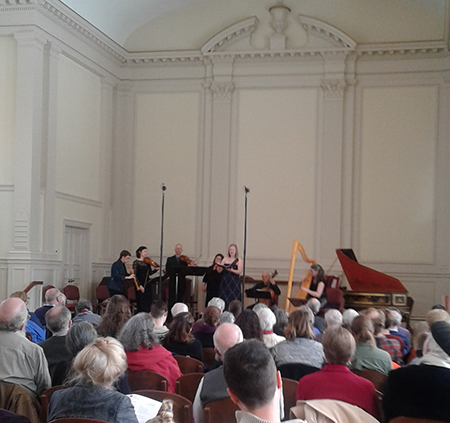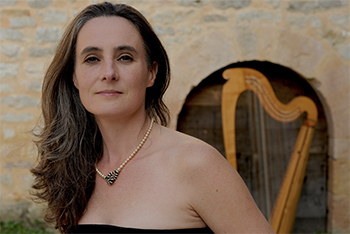by Daniel Hathaway

Cleary demonstrated the colorful timbre of her Baroque harp in a Purcell prelude. Then violinists Julie Andrijeski and Scott Metcalfe, violist Allison Monroe, gambist Jaap ter Linden, and harpsichordist Eric Milnes joined Baroque oboist Debra Nagy to set up the emotional ambiance for Dido’s triple demise. Three movements from Purcell’s near-opera King Arthur — a Symphony, the song Fairest Isle, and a Chaconne — were followed by Michelangelo Rossi’s Toccata settima, a wrenchingly chromatic keyboard work expressively adapted by Cleary for solo harp.
Dido first accepted her fate in three excerpts from Cavalli’s opera La Didone. Over improvised music, Nagy declaimed narrative from Patricia Johnson’s recent translation of Book IV of The Aeneid between Rottsolk’s dramatic scenes.
Nagy and Andrijeski provided an interlude in the form of the “Plainte” and “Passacaille” from Marin Marais’ Suite in g. Somber enough at first, the mood was soon enlivened by elaborate runs where the two soloists chased each other like playful squirrels.

An interlude from the pen of Purcell included his Pavane in 4 Parts and Chacony — the third chaconne of the afternoon and a particularly sprightly one. Then came the most famous treatment of Dido’s death, “When I am laid in earth,” from Purcell’s own Dido and Aeneas, preceded by the recitative in which the Queen takes leave of her confidante Belinda.
Les Délices’ winning combination of rigorous scholarship and unpretentious delivery again worked laudably in the ensemble’s favor on Sunday afternoon. While an afternoon devoted principally to lamentation could be a downer, Nagy balanced this program with contrasting works, and populated her ensemble with just the right artists to pull it off.

Published on ClevelandClassical.com March 19, 2018.
Click here for a printable copy of this article



